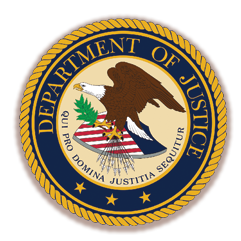
December 2022
The following are several drug diversion news stories that have captured our industry’s attention.
Kentucky hospital to pay millions after employee stole drugs for distribution
Pikeville Medical Center agreed to settle for $4.39 million with the U.S. Department of Justice to resolve allegations that it violated the Controlled Substances Act (CSA). Federal authorities allege that the hospital’s negligent recordkeeping allowed Kayla White Perry, a former pharmacy technician, to divert “over 60,000 dosage units of oxycodone, hydrocodone and methadone” before being discovered in 2018. She then shared the stolen drugs with her husband to distribute illegally. The hospital added that no patients were harmed. Both Perry and her husband will serve at least three years in federal prison.
New Jersey program to monitor opioid use awarded $1.4 million federal grant
New Jersey attorney general Matthew J. Platkin announced that the New Jersey Prescription Monitoring Program (NJPMP) was awarded $1.4 million to help monitor opioid use for patients. The NJPMP is an electronic database that allows healthcare professionals to see a patient’s prescription drug history with the aim of reducing the risk of abuse or fraud. The funds, in addition to $972,426 from a state opioid settlement, will be split between the state and local governments to address the state’s ongoing opioid epidemic.
Michigan nurse pleads guilty to tampering with painkiller syringes
A registered nurse recently pleaded guilty to charges of tampering with syringes from automated dispensing machines at DMC Sinai-Grace Hospital in Detroit. Mary Cheatham allegedly removed doses of hydromorphone for personal use, then replaced them with saline. The drugs were intended for patients in the critical care unit of the hospital. Cheatham is scheduled for sentencing in January 2023 and could face up to 10 years in federal prison and a fine of up to $250,000 if convicted.
Behind-the-counter nasal spray fast-tracked by FDA for OTC
Biopharmaceutical company Emergent BioSolutions, Inc. announced that the Food and Drug Administration (FDA) will grant Priority Review of its nasal spray product to treat opioid addiction. An FDA approval of naloxone (Narcan) will enable pharmacies to make the product available over the counter (OTC). The FDA opined switching to OTC gives consumers the potential to access a “safe and effective product…without the supervision of a healthcare practitioner,” improving access to the treatment and curtailing overdose deaths.
Fentanyl vaccine a potential ‘game changer’ for opioid epidemic
Researchers from the University of Houston have developed a vaccine that could block the euphoric effects of fentanyl from entering the brain, eliminating the drug’s “high.” Up to 80 percent of people dependent on opioids suffer a relapse despite treatment. According to the study, the fentanyl vaccine creates antibodies that allows it to exit the body through the kidneys, reducing the antinociceptive, behavioral, and physiological effects. The vaccine did not cause any adverse effects in mice, encouraging researchers as they move on to clinical trials with humans soon.
Pennsylvania is the latest state to decriminalize fentanyl test strips
Governor Tom Wolf has signed a law legalizing the sale and distribution of test strips meant to detect fentanyl in illicit drugs in Pennsylvania. The state joins 30 others around the country that have done the same in the wake of the opioid crisis. The strips were previously considered “illegal drug paraphernalia” by the Drug Enforcement Administration, which led most states from prohibiting its use. Harm reduction advocates welcome the new law and suggest it could help reduce overdoses among drug users.

Primary care moves patients with addiction to self-advocacy
A new study published in the JAMA Network Open found that people with drug addiction can better manage their health when they know how to engage with their doctors. The study assigned 252 individuals in a three-month treatment program that taught them how to talk with their healthcare providers about their substance abuse and other health conditions they faced. After following these patients for five years, researchers found that they were 34 percent more likely to communicate with their providers, are 30 percent more likely to talk with them about their addiction and are 21 percent less likely to visit the emergency room due to substance use. Researchers are encouraged that this program could be valuable in helping to address the root causes of addiction.

Northeast hospital agrees to pay $1.9 million to resolve allegations of controlled substance recordkeeping violations
Northeast Hospital Corporation has agreed to pay $1.9 million in civil penalties to resolve allegations that it failed to keep accurate records of controlled substances at one of its four Massachusetts hospitals. In 2018, an employee stole over 17,000 units of drugs, including fentanyl, Percocet, and oxycodone. Although investigators at Beverley Hospital found and suspended the employee, the DEA found the hospital had violated recordkeeping requirements of the CSA.

DDWatch highlights individuals who promote excellence in the business world. Their stories and leadership experience are what inspires others and move them to action.
One CRNA’s path to recovery from drug addiction
This is part 2 of an article on the perspectives of a drug diverter. Read part 1 in the November issue of DDWatch.

Bridget Petrillo, MS, CRNA
Bridget Petrillo, MS, CRNA, believed she found her calling. As a nurse anesthetist in a large medical facility, she excelled in caring for patients before, during, and after a surgical procedure. Petrillo believed that caring for patients could make a significant difference in their health outcomes. She loved her job.
But after a ski accident tore a knee ligament, Petrillo was prescribed opioids to ease her pain. Extenuating circumstances — such as a “loose” waste monitoring system at her facility — and a family history of alcoholism led to her divert drugs rather than waste them. If it were not for her family who held an intervention, Petrillo wondered if she would have survived the addiction.
The road to recovery was long and hard.
“I was homeless. I lived in my car. I lived with friends. I had mountains of debt. And I could not work as a nurse for half of that three-year time frame. It seemed hopeless for me.”
Amid the immense difficulties, Petrillo looked to the blessings she received. Despite the time away from her career, her employer did not terminate her – she was kept “on the books” on the condition that she completed addiction treatment. Friends and family helped find resources for her rehabilitation, then supported her while away from work.
Most importantly, her experience gave her another calling — advocating for CRNAs suffering from substance abuse. She now volunteers as the chairperson for the Peer Assistance committee at the American Association of Nurse Anesthesiology (AANA).
“I’ve had a profound change in personality in the 24 years I have been substance-free,” she said. “I’m still part of a 12-step program, as are many colleagues, and we are glad to tell our stories to others. I visit different anesthesia schools and share my experience. Sometimes, I will sit and take phone calls from affected healthcare workers, whether they are a CRNA or not.”
Petrillo says that nurses are often asked to do more with less in their roles. Despite the resources that she and others may offer them, many nurses don’t take the help because there is a stigma of admitting to substance abuse. Some truly believe they can heal themselves.
“Many are concerned about preserving their jobs and livelihood,” she said. “They don’t understand that they can’t do this alone. Addiction is a difficult disease. If they continue their path, they’re either going to die, end up living on the street, or find themselves in prison. They also need to remember that they could accidentally harm their patients.”
Petrillo said that prison is not the place for a drug addict because they cannot receive the treatment that they need and often leave with the same issues they had prior to serving their sentence. Petrillo was one of the lucky few who avoided prison while recovering. She became sober and stayed in touch with co-workers. When Petrillo returned to work from a three-year hiatus, she was welcomed with open arms. With a positive direction in life, she eventually wound up as a CRNA at Mayo Clinic Arizona, where she works today.
“I love the operating room,” Petrillo said, “I love the science, the art of anesthesia, and how it works to help patients through surgical procedures. I’m fortunate to have had the support to get back to work and have the career I have today. I’ve come a long way since those dark times.”
Petrillo emphasized that one of the reasons she participates in the AANA helpline is to let people know there is someone like them on the other side answering the phones, telling them there is a path to recovery.
It’s been 24 years since Petrillo diverted drugs from the facility. Each day is a reminder that she is lucky. This time around, Petrillo is not only working her dream job, but also helping others achieve theirs.
If someone you know or work with has a substance abuse problem, please don’t hesitate to seek help. The American Association of Nurse Anesthesiology has a special hotline to support healthcare workers with drug addiction. Call 1-800-654-5167 or visit: https://www.aana.com/practice/health-and-wellness-peer-assistance/About-AANA-Peer-Assistance
###


